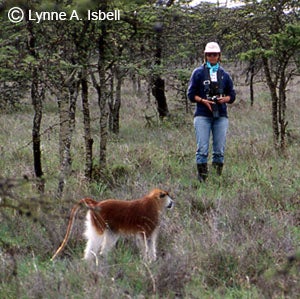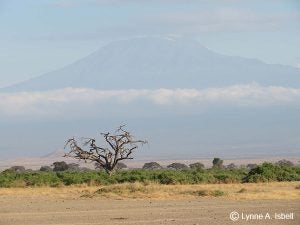
My research interests have no taxonomic or geographic boundaries. I am a member of the Animal Behavior Society, American Association of Physical Anthropologists, International Primatological Society, and American Society of Primatologists, among others. My direct research experience has been with ungulates and primates in Africa. My research program has centered on primate socioecology, with particular attention applied to food competition, predation, dispersal, and micro-ranging behavior of individuals, and their connections to the evolution and ecology of grouping. Those interests have led to other areas of investigation, including paleobiogeography, the origins of primates, and primate interactions with non-primate taxa as diverse as ants and snakes. My 2009 book (The Fruit, the Tree, and the Serpent: Why We See So Well, Harvard University Press) reflects this pathway with the development of a multidisciplinary theory proposing that one particular type of predator (snakes) was largely responsible for the origin of primates and the initial expansion of primate visual systems and brains. I am field-oriented, and have conducted multi-year fieldwork in Uganda and Kenya, with briefer forays into Madagascar, Tanzania, Rwanda, and the Democratic Republic of Congo. I have also done behavioral research on captive primates at the California National Primate Research Center.

Former students have compared predator-related behavior of vervets and patas monkeys (Karin Enstam Jaffe); the ecological basis of social relationships among female gray-cheeked mangabeys in Kibale Forest National Park, Uganda (Rebecca Chancellor); the effects of enclosure substrate on activities of captive rhesus macaques in Davis (Brianne Beisner); the responses of elephants to translocation in Tsavo National Park, Kenya (Noa Pinter-Wollman); the ecology of color vision in titi monkeys in Manu National Park, Peru (John Bunce); developmental behavior in bottlenose dolphins off the coast of Florida (Katie McHugh); primate/snake interactions at various captive locations (Stephanie Etting); modes of bacterial transmission in giraffe and other ungulates in Laikipia, Kenya (Kim VanderWaal); a comparison of the dynamics of monogamous pair bonds in titi and saki monkeys in Ecuador (Amy Porter), and chronic stress in captive group-housed rhesus macaques (Julie Linden).

Potential graduate students for my lab are those whose interests are closely aligned with my own, which means that I am most interested in those who want to work in Africa with monkeys on some question concerning predation or food as it relates to social behavior. Please note that I am not accepting any new graduate students at this time.
